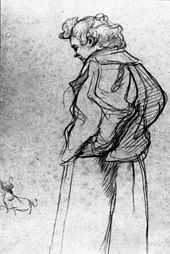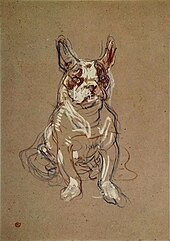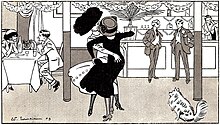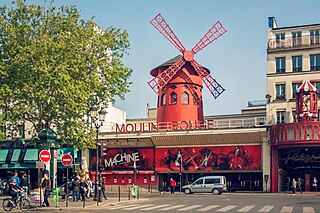
Moulin Rouge is a cabaret in Paris, on Boulevard de Clichy, at Place Blanche, the intersection of, and terminus of Rue Blanche.

Comte Henri Marie Raymond de Toulouse-Lautrec-Monfa, known as Toulouse Lautrec, was a French painter, printmaker, draughtsman, caricaturist, and illustrator whose immersion in the colourful and theatrical life of Paris in the late 19th century allowed him to produce a collection of enticing, elegant, and provocative images of the sometimes decadent affairs of those times.

Maurice Utrillo, born Maurice Valadon; 26 December 1883 – 5 November 1955), was a French painter of the School of Paris who specialized in cityscapes. From the Montmartre quarter of Paris, France, Utrillo is one of the few famous painters of Montmartre to have been born there.

Suzanne Valadon was a French painter who was born Marie-Clémentine Valadon at Bessines-sur-Gartempe, Haute-Vienne, France. In 1894, Valadon became the first woman painter admitted to the Société Nationale des Beaux-Arts. She was also the mother of painter Maurice Utrillo.

Moulin Rouge is a 1952 British historical romantic drama film directed by John Huston from a screenplay he co-wrote with Anthony Veiller, based on the 1950 novel of the same name by Pierre La Mure, and produced by John and James Woolf. The film follows artist Henri de Toulouse-Lautrec in 19th-century Paris's bohemian subculture in and around the Moulin Rouge, a burlesque palace. The film was screened at the 14th Venice International Film Festival, where it won the Silver Lion.
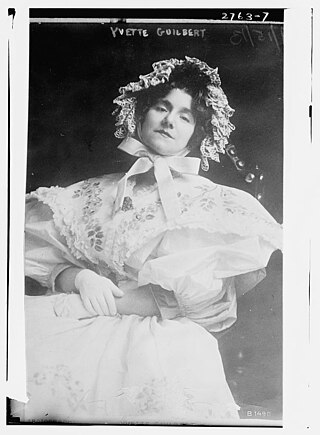
Yvette Guilbert was a French cabaret singer and actress of the Belle Époque.
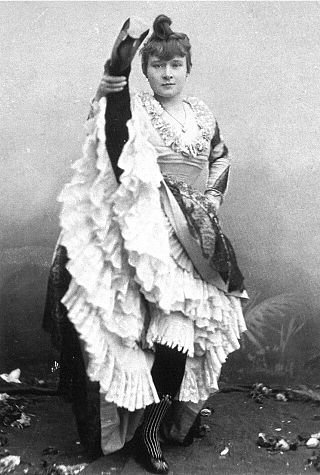
La Goulue, was the stage name of Louise Weber, a French can-can dancer who was a star of the Moulin Rouge, a popular cabaret in the Pigalle district of Paris, near Montmartre. Weber became known as La Goulue because as an adolescent, she was known for guzzling cabaret patrons' drinks while dancing. She also was referred to as the Queen of Montmartre.

Jane Avril was a French can-can dancer made famous by Henri de Toulouse-Lautrec through his paintings. Extremely thin, "given to jerky movements and sudden contortions", she was nicknamed La Mélinite, after an explosive.

At the Moulin Rouge is an oil-on-canvas painting by French artist Henri de Toulouse-Lautrec. It was painted between 1892 and 1895. Included in the background is a self-portrait of the artist in profile. It is one of a number of works by Toulouse-Lautrec depicting the Moulin Rouge cabaret built in Paris in 1889.

Le Sphinx was a maison close (brothel) in Paris in the 1930s and 1940s. Along with the "Le Chabanais" and "One-Two-Two" it was considered one of the most luxurious and famous Parisian brothels.

Maxime-Pierre Jules Dethomas was a French painter, draughtsman, printmaker, illustrator, and was among the best known theater-set and costume designers of his era. As an artist, Dethomas was highly regarded by his contemporaries and exhibited widely, both within France and abroad. He was a regular contributor to the Impressionistes et Symbolistes, and a founding committee member of the Salon d'Automne. In 1912, he was awarded the Chevalier de la Légion d'honneur for his contributions to French art.

Le Moulin de la Galette is the title of several paintings made by Vincent van Gogh in 1886 of a windmill, the Moulin de la Galette, which was near Van Gogh and his brother Theo's apartment in Montmartre. The owners of the windmill maximized the view on the butte overlooking Paris, creating a terrace for viewing and a dance hall for entertainment.

Moulin Rouge: La Goulue is a poster by French artist Henri de Toulouse-Lautrec. It is a colour lithograph from 1891, probably printed in about 3,000 copies, advertising the famous dancers La Goulue and "No-Bones" Valentin, and the new Paris dance hall Moulin Rouge. Although most examples were pasted as advertising posters and lost, surviving examples are in the collection of the Indianapolis Museum of Art and many other institutions.

Cha-U-Kao was a French entertainer who performed at the Moulin Rouge and the Nouveau Cirque in the 1890s. Her stage name was also the name of a boisterous popular dance, similar to the can-can, which came from the French words "chahut", meaning "noise" and "chaos". She was depicted in a series of paintings by Henri de Toulouse-Lautrec. Cha-U-Kao soon became one of his favorite models. The artist was fascinated by this woman who dared to choose the classic male profession of clowning and was not afraid to openly declare that she was a lesbian.

Paris, the capital of France, has an active LGBT community. In the 1990s, 46% of the country's gay men lived in the city. As of 2004, Paris had 140 LGBT bars, clubs, hotels, restaurants, shops, and other commercial businesses. Florence Tamagne, author of "Paris: 'Resting on its Laurels'?", wrote that there is a "Gaité parisienne"; she added that Paris "competes with Berlin for the title of LGBT capital of Europe, and ranks only second behind New York for the title of LGBT capital of the world." It has France's only gayborhoods that are officially organized.
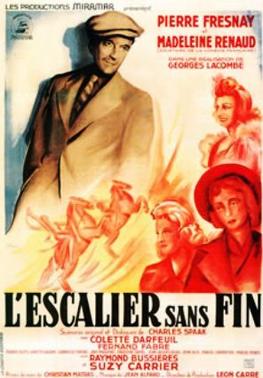
The Stairs Without End is a 1943 French drama film directed by Georges Lacombe and starring Pierre Fresnay, Madeleine Renaud and Suzy Carrier.

Désiré Dihau was a French bassoonist and composer. He was the bassoonist painted by Edgar Degas in The Orchestra at the Opera with the cellist Louis-Marie Pilet seated behind him.

Marie Dihau was a French singer, pianist as well as singing and piano teacher.

Le Hanneton was a popular Parisian lesbian bar of the 1890s and early 1900s at 75 Rue Pigalle in the Montmartre district. It was owned and run by Madame Armande Brazier, who was the subject of a well-known lithograph by Toulouse Lautrec, Au Hanneton.

Le Rat Mort was a popular cafe/restaurant and cabaret in Paris in the 19th and early 20th centuries. Located in the Place Pigalle in the Montmartre District, it was frequented by artists, writers, actors, artist models, and prostitutes, and was a gathering place for lesbians in the evenings. Paintings and sketches inspired by the cafe and its customers included work by Toulouse Lautrec, Maxime Dethomas, Auguste Chabaud and Vlaminck Maurice.
